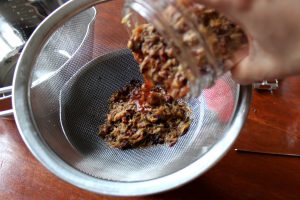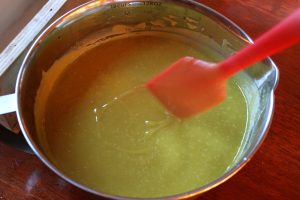Sunny Summer Flowers Cold Process Soap
This recipe yields approximately 3.5 lbs of cured soap, and is practically guaranteed to be a richly lathering, skin-soothing favorite of anyone who tries it. Enjoy! This recipe is beginner friendly, but is written for those with at least a smidge of existing cold process soap making experience, so absolute first-timers may want to tuck this away for just a little later!
Ingredients
- 16 oz organic Coconut oil
- 16 oz organic Extra Virgin Olive oil
- 8 oz organic Hemp Seed oil
- 7 oz raw organic Cocoa butter
- 17 oz herbal infusion [ 20 oz filtered hot water with dried organic Hibiscus petals, 1 tsp, Annatto seeds (1 tbsp), Calendula petals (1 cup), and Chamomile blossoms (1/2 cup). Steep until cool, strain, and use 17 oz of the strained liquid for your lye solution ]
- 6.8 oz lye NaOH
- up to 1.4 oz Essential oil or leave unscented! Just remember many essential oils will fade in cold process soaps, especially citrus ones, so don't expect your cut bars to smell the same as that freshly opened bottle.
Instructions
- To start, bring about 20 oz of water to at least 180º F. This recipe requires only 17 oz of liquid, but you'll need to compensate for any loss through evaporation or the herb material retaining liquid during straining. Add your dried herbs to the hot water and steep, covered, while you weigh your fats.

- Combine and melt your oils and butters together at a low temperature (I do mine in the oven on the "keep warm" setting, which is around 170º F, but any low temp indirect heat source will do.)While your fats are slowly melting, strain your herb infusion and place your (heat-proof) container with 17 oz of the strained liquid in the freezer or in an ice bath to cool before adding your lye. I use this time to prepare my molds, tidy up my sloppy spills, stare out my window at my backyard, hum a little soapy song -- the possibilities are endless!

- Once your infusion has cooled, slowly sprinkle in your lye, stirring steadily as you go. This recipe will create a bright red-orange lye solution that will fade to a buttery yellow in your finished soap.

- At this point, I always cool my lye solution a little bit before removing my fats from their heat source. The fats are about 170º F, and the lye solution can be as much as 30 degrees hotter than that, so I give the lye solution a cooling head start before bringing both temps down to around 120-130º F in preparation for mixing.

- Once you've thoroughly hand-mixed your lye solution into your oils, use an immersion blender to bring your mixture to trace. I like to bring my soaps to just a light trace (as seen in the picture above), because I love to create simple, blocky bars with flat tops, but you can make it as heavy as you'd like of course, depending on how exciting you want to get with your tops. Now you can add your fragrance and plop that soap in its mold or molds!

- I sprinkled this batch with dried organic Hibiscus and Calendula petals before covering and insulating for the night, and I left this one in its molds for 24 hours before unmolding, even though this recipe was at the high end of the hardness scale on the lye calculator.

- The next evening, I unmolded and sliced these lovely, sunny bars of goodness.

